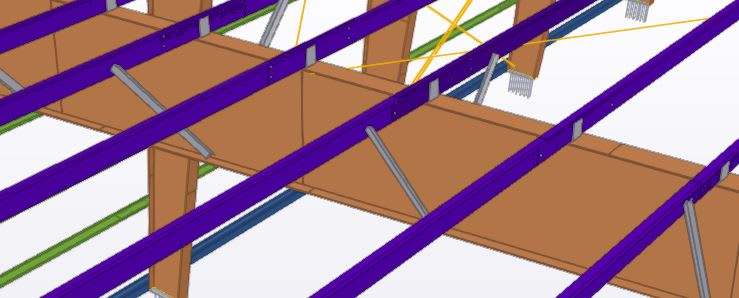TAK19
Civil/Environmental
- Nov 1, 2021
- 7
Good Morning,
I am designing the Pre Engineered Metal Building. I am using a Etabs 2016 to perform the design.
I have noticed that the displacements value I am getting are too high with respect to L/360,L/400 requirements.(Owner require the exterior walls to have deflection limits of L/360) I need help in controlling this high displacements of the joints.
I know the common methods used in the industry to control the lateral movement but my problem with them are as follow:
1. Cable or Rod Bracings - Cant use as I have lots of windows in most of the walls
2. Portal Frame - When I added a portal frame to the rigid frame the software gives me warning that the columns are overlapping and also its not reducing the displacement noticibly.
3. Wind Column - Don't know how to add them in Etabs.
Questions :
1. How can I fixed the problem in item number 2
2. I have tried all known methods to make the rod bracings tension only but I am unable to.(in Etabs)
3. The largest displacement value I am getting from the software is 7 inches .I am sure I am missing something important because this building is only 4000 sqft with mono slope roof eave ht of 18 ft.
I would Highly appreciate if you all experts can guide me on this.
I am designing the Pre Engineered Metal Building. I am using a Etabs 2016 to perform the design.
I have noticed that the displacements value I am getting are too high with respect to L/360,L/400 requirements.(Owner require the exterior walls to have deflection limits of L/360) I need help in controlling this high displacements of the joints.
I know the common methods used in the industry to control the lateral movement but my problem with them are as follow:
1. Cable or Rod Bracings - Cant use as I have lots of windows in most of the walls
2. Portal Frame - When I added a portal frame to the rigid frame the software gives me warning that the columns are overlapping and also its not reducing the displacement noticibly.
3. Wind Column - Don't know how to add them in Etabs.
Questions :
1. How can I fixed the problem in item number 2
2. I have tried all known methods to make the rod bracings tension only but I am unable to.(in Etabs)
3. The largest displacement value I am getting from the software is 7 inches .I am sure I am missing something important because this building is only 4000 sqft with mono slope roof eave ht of 18 ft.
I would Highly appreciate if you all experts can guide me on this.

